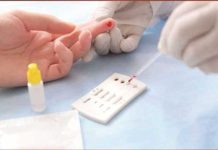
CONTINUING its cause to promote black tiger shrimp (Penaeus monodon) aquaculture, the Southeast Asian Fisheries and Development Center (SEAFDEC/AQD) harvested 600,000 high-quality shrimp postlarvae at its biosecure hatchery in Tigbauan Main Station in Iloilo, on May 20.
These larvae, produced using wild spawners from Carles, Iloilo, were used to seed another grow-out run under SEAFDEC/AQD’s “Oplan Balik Sugpo” program.
Harvested postlarvae were packed in double-layered polyethylene bags, each filled with one-third UV-sterilized seawater and two-thirds oxygen, to ensure stress-free transport to SEAFDEC/AQD’s Dumangas Brackishwater Station (DBS). There, they underwent a 30-minute acclimatization process before being stocked in two earthen ponds.
These larvae are expected to be harvested after 120 days of culture.
Last year, the research center netted five tons of tiger shrimp from 200,000 postlarvae with a stocking density of 25 pieces per square meter.
The Oplan Balik Sugpo program aims to revive the once-thriving black tiger shrimp sector in the country. It focuses on improving local broodstock, strengthening biosecurity practices, and promoting sustainable farming approaches. It supports local shrimp farmers by supplying robust, hatchery-reared fry with higher survival rates, which can improve farm yields and boost profitability.
“By producing disease-free and locally sourced larvae, we not only reduce dependence on imported shrimp stocks but also help shield farms from disease outbreaks,” said Chief Dan Baliao./PN







